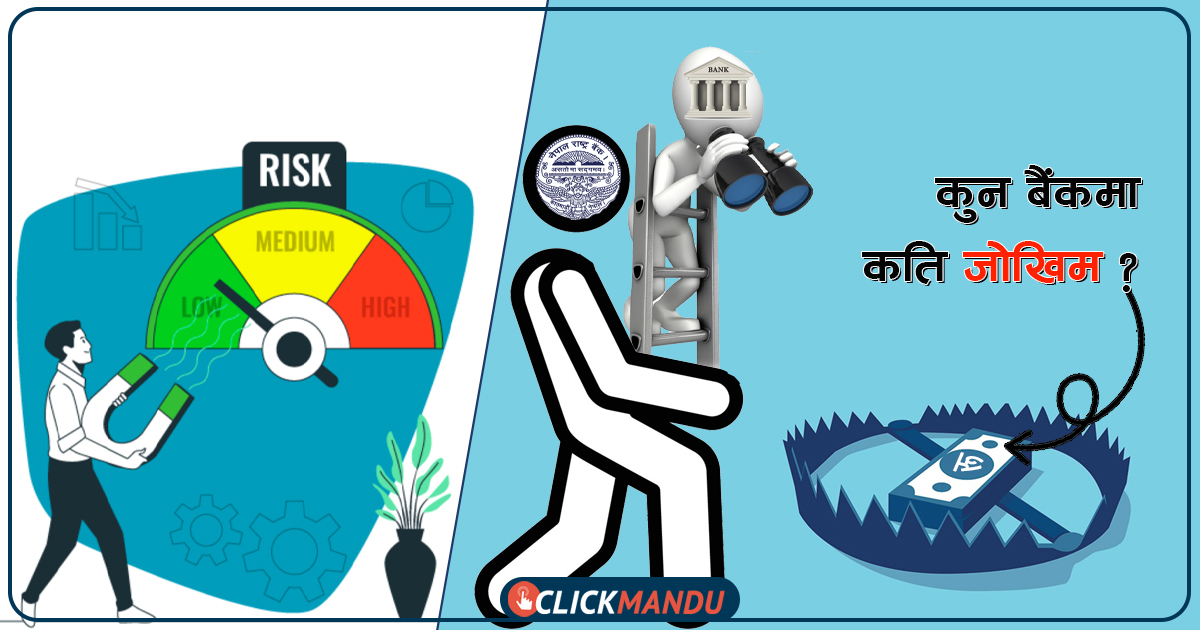Kathmandu: In a comprehensive move to strengthen the country’s banking sector, Nepal Rastra Bank (NRB) has enforced additional capital requirements — known as “capital charges” — on commercial banks, based on their level of risk exposure.
These capital charges are part of NRB’s broader effort to align with international banking standards under Basel III and safeguard public deposits by improving risk management within banks.
Banking is essentially the business of trading in money. Banks collect deposits from the public and lend it to businesses and individuals. As trustees of public deposits, banks operate in a state-protected environment, and their core function is financial intermediation — charging fees or making profits from this money trade. However, the sensitivity of this business is extremely high, with depositors’ money comprising nearly 90 percent of a bank’s capital, while shareholders’ equity only accounts for around 10 percent.
Given the potential fallout if a bank collapses, banking regulations worldwide are strict. The introduction of Basel III — developed in the aftermath of the 2008 global financial crisis — has mandated risk-based capital requirements to reduce financial sector vulnerabilities. Nepal has gradually implemented Basel III since 2016 and is now entering the final phase of its full execution.
Under Basel III, banks must allocate capital for various types of risks, including credit risk, market risk, operational risk, and liquidity risk. Of these, credit risk — the possibility that borrowers may default — is the highest. Banks are required to compute Risk-Weighted Assets (RWAs) based on exposure and apply capital against them as a buffer.
In addition to this, NRB conducts its own risk assessment through supervisory inspections and imposes additional capital charges on banks deemed to have higher operational or overall risk.
If a bank is found to have a higher risk profile through NRB’s supervisory assessments, it is required to hold more capital — known as a capital charge. Conversely, a bank with lower risk receives a minimal or no additional charge. Essentially, the higher the risk, the higher the capital required, limiting the bank’s lending ability and potentially reducing profitability.
NRB performs both on-site and off-site inspections — analyzing operational performance, compliance with regulations, customer services, governance standards, and risk management practices. These assessments help the central bank determine each institution’s risk level and direct them to maintain capital above the statutory minimum of 11 percent, as required by the Capital Adequacy Framework, 2015. This minimum includes 8.5 percent of core capital (Tier 1) and 2.5 percent of supplementary capital (Tier 2).
According to data from the third quarter of the fiscal year 2024/25, NRB identified elevated operational risks in state-owned banks, while overall risk was found to be high in private banks reporting cumulative losses.
NIC Asia Bank, Kumari Bank, and Prabhu Bank were directed to maintain an additional 4 percent capital on their RWAs due to high overall risk. Each was also levied a 3 percent charge for operational risk.
Himalayan Bank and Prime Commercial Bank were told to maintain 4 percent additional capital against their previous year’s income due to operational risk.
Similarly, Rastriya Banijya Bank, Agriculture Development Bank, and Nepal Bank — all government-owned — were directed to allocate 4 percent of last year’s income as capital to mitigate operational risks.
These five banks — Prime, Himalayan, Rastriya Banijya, ADBL, and Nepal Bank — were also issued a combined 7 percent capital charge, combining operational and overall risk.
Interestingly, while the public often considers government-owned banks as safe havens for deposits, NRB’s data shows that three out of the seven highest-risk banks are state-owned. This contradicts public perception and suggests that operational inefficiencies in these banks have increased their risk exposure.
In contrast, Standard Chartered Bank Nepal was assessed as the least risky institution. Known for its robust internal governance and compliance with both NRB and its parent company’s stringent international standards, the bank was only required to maintain a 2 percent capital charge for operational risk and had no additional charge for overall risk.
Other banks seen as relatively lower risk included Nepal SBI Bank, Sanima Bank, and Nabil Bank, each with a 2 percent charge for both operational and overall risk — totaling 4 percent.
Banks such as Machhapuchchhre, Nepal Investment Mega, Everest, and NMB Bank were required to maintain 3 percent capital for overall risk and 2–3 percent for operational risk, leading to total additional capital charges of around 5 percent.
Meanwhile, Siddhartha Bank, Citizens Bank, Laxmi Sunrise, and Global IME were each assigned 3 percent for both operational and overall risk, totaling 6 percent.
According to NRB officials, a capital charge up to 5 percent indicates a moderate risk profile, while anything exceeding 7 percent implies high risk. A former banker remarked that a higher capital charge hampers a bank’s lending ability, profitability, and ultimately the return it can offer to investors.
“Capital charges of 4–5 percent indicate good risk management,” a senior banker explained. “However, when charges cross that threshold, it reflects operational or governance issues. Banks facing higher capital charges will struggle to expand their business and offer competitive returns.”
Experts warn that banks with poor risk profiles and higher capital requirements could become less attractive to both investors and depositors. As cautious depositors may avoid risky banks, talented staff may also seek opportunities in more stable institutions. Such brain drain could further weaken the governance of underperforming banks.
Former banker Bhuvan Dahal emphasized that excessive capital requirements diminish profitability, while Shobhan Dev Pant noted that capital charges reflect the NRB’s assessment of risk and are effectively a regulatory penalty.
“When NRB imposes a capital charge, it’s a sign that the bank’s risk mitigation efforts have fallen short,” Pant said. “It’s also a way for the central bank to protect depositors by forcing banks to shore up their financial buffers.”



Comment Here